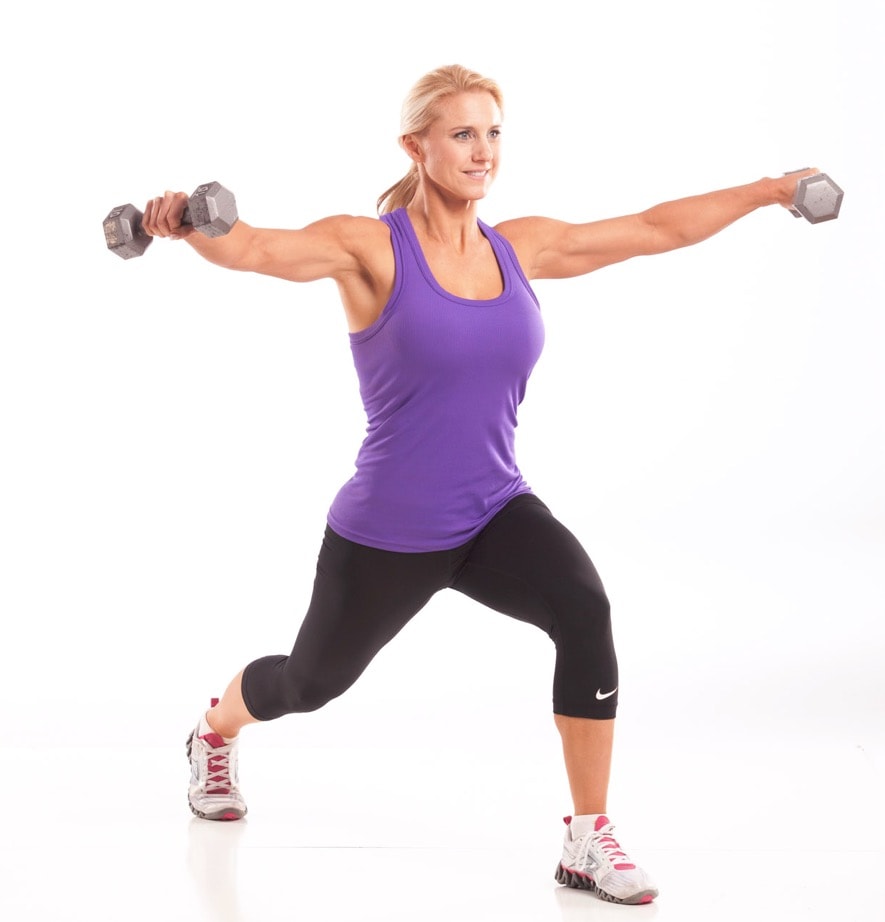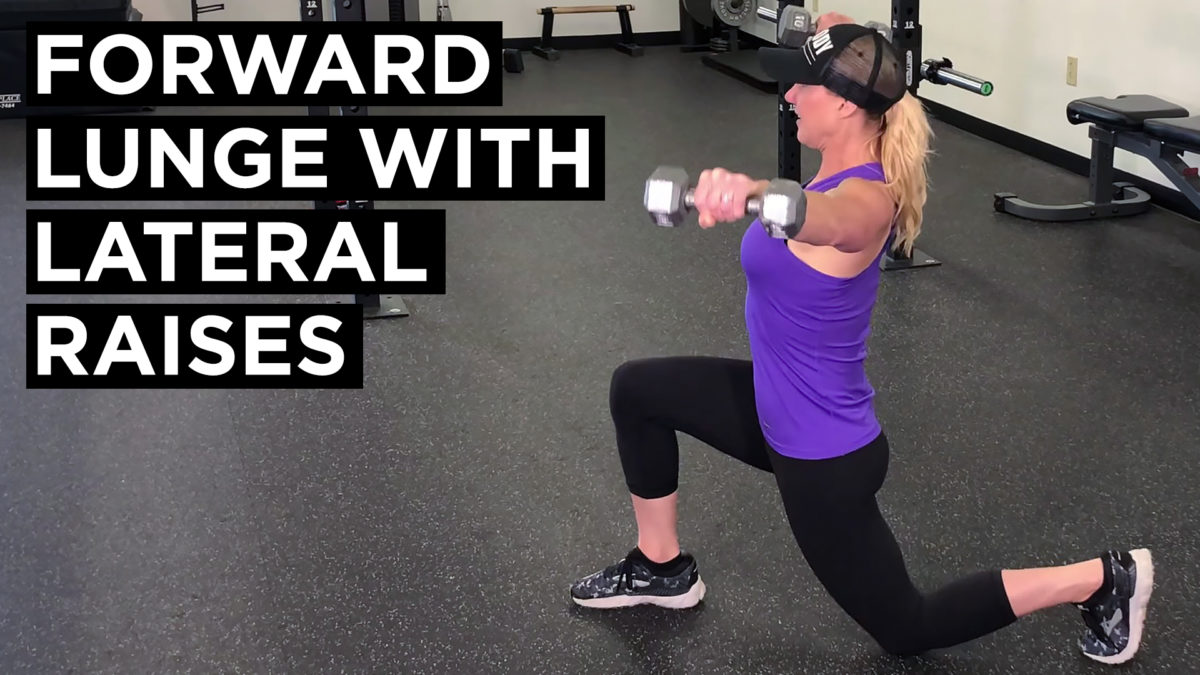Forward Lunge with Lateral Raise: A Comprehensive Guide for Women
In the realm of women’s fitness, combining exercises can be a game-changer, especially for those looking to optimize their workout efficiency. The forward lunge with lateral raise is a prime example of this, blending lower body work with upper body strength training. This compound movement not only saves time but also intensifies your workout, ensuring a comprehensive approach to muscle development and conditioning. Let’s dive into what this exercise entails and how to perform it effectively.
What are Lunges with Lateral Raises?
A forward lunge with lateral raise is a dynamic compound exercise that targets multiple muscle groups. It combines the forward lunge, a staple lower body exercise, with the lateral raise, which primarily engages the shoulder muscles. This combination works various parts of the body simultaneously, promoting balance, coordination, and functional strength in a similar way to the 45º Lunge with Lateral Raise.
Step-by-step Directions to Doing a Forward Lunge with Lateral Raise

How to do Forward Lunges with Lateral Raise
1. Stand with your torso upright holding a pair of dumbbells at your sides, palms facing thighs, and feet hip-width apart. This will be your starting position.
2. Take a large step forward with your right leg (about 2 feet or so) and plant the foot on the floor. The trailing foot should come up on forefoot.
3. Then, bend your front knee as you simultaneously allow your back leg to bend, and lower yourself until your forward knee is about 90 degrees (keeping front shin perpendicular to ground).
Tip: Do not let your front knee go over your toes to maintain proper position.
4. In the bottom position, raise the weights laterally to your sides with a slight bend in the elbows and thumbs lower than the pinkies (like you’re pouring a pitcher of water) until your hands are just past shoulder height. Tip: Keep your torso upright and stationary.
5. Slowly lower dumbbells back down to sides. Then, drive through the heel of your lead foot and extend the hips and knees to raise yourself back up.
6. Forcefully push off with your right foot to return to your starting position, then repeat with opposite leg.
7. Keep alternating between legs for the prescribed amount of repetitions.
What Muscles do Forward Lunge with Lateral Raise Target Specifically?
This exercise works several muscle groups:
- Lower Body: Primarily targets the quadriceps and glutes. It also engages the hamstrings and calves.
- Upper Body: The lateral raise primarily targets the deltoids (shoulder muscles). It also engages the upper back and arms.
What are Watch Outs That Need to be Considered When Doing a Forward Lunge with Lateral Raise?
- Knee Alignment: Avoid letting the front knee extend beyond your toes to prevent strain.
- Posture: Maintain a straight back and avoid leaning forward.
- Controlled Movement: Perform both the lunge and raise with control to prevent injury.
- Weight Selection: Choose weights that allow you to complete the exercise with proper form.
Is There a Benefit to Combining Movements like Lunges and Lateral Raises Together?
Combining movements like lunges and lateral raises into a single exercise routine offers a range of compelling benefits that enhance overall fitness and efficiency. This fusion of movements is particularly advantageous for those seeking to maximize their workout time. By engaging multiple muscle groups simultaneously, such as the glutes, quads, hamstrings, and deltoids, this combination allows for a comprehensive workout in a shorter period. This efficiency means you can achieve more in less time, making it ideal for busy schedules.
Furthermore, the integration of these exercises significantly improves balance and coordination. The forward lunge demands stability, engaging core muscles and enhancing lower body strength, while the lateral raise requires upper body control and precision. This combination not only strengthens muscles but also trains the body to coordinate movements more effectively, which is beneficial in daily activities and other sports. Improved coordination and balance are essential for athletic performance and can also reduce the risk of injuries in everyday life.
In terms of functional strength, the forward lunge with lateral raise excels. Functional strength refers to the type of strength that is useful in real-world scenarios, beyond the confines of gym equipment. This exercise mimics natural movements, thereby enhancing the muscles’ ability to work together in performing daily tasks and movements, from lifting to bending and reaching.
Lastly, the caloric burn achieved through this combination is noteworthy. Since multiple muscle groups are engaged, the body works harder, increasing the heart rate and, consequently, the number of calories burned. This makes the exercise highly effective for those focused on weight management or fat loss. The varied and dynamic nature of combining lunges and lateral raises also keeps the workout engaging, encouraging consistency and long-term commitment to fitness routines.
Find out more about Online Personal Training with Julie

Related Exercises:
Walking Lunges
45º Lunge with Lateral Raises

